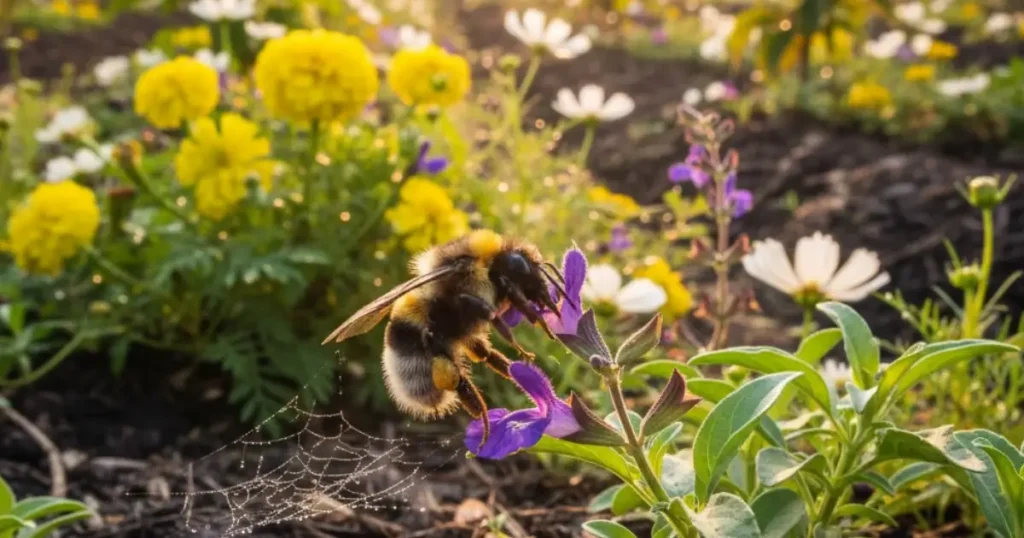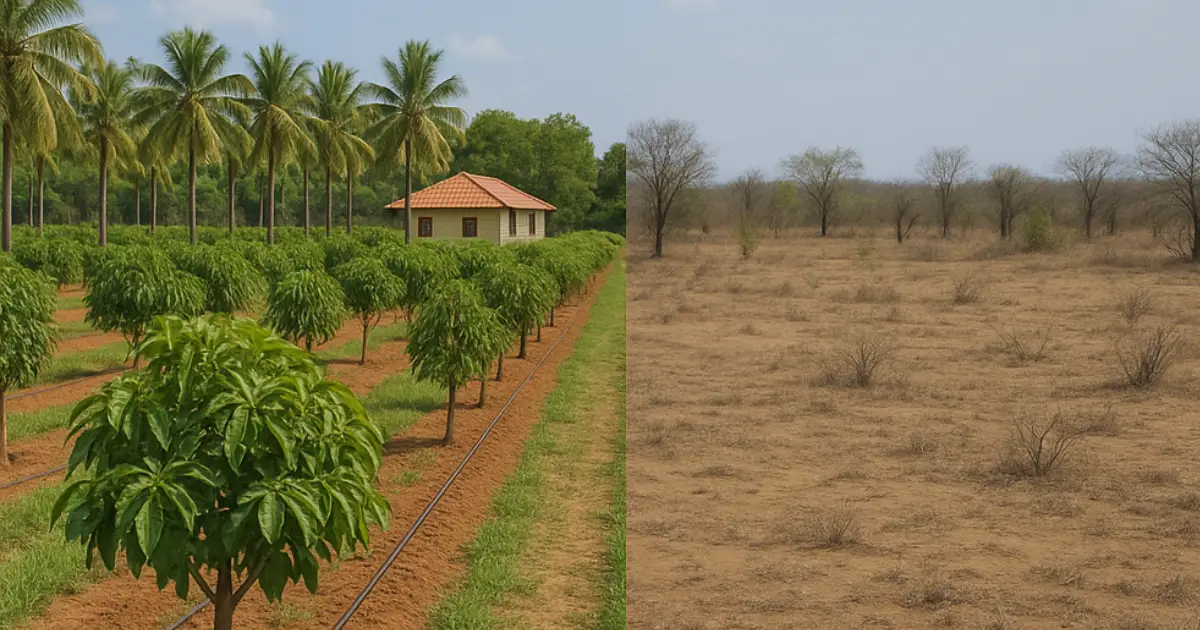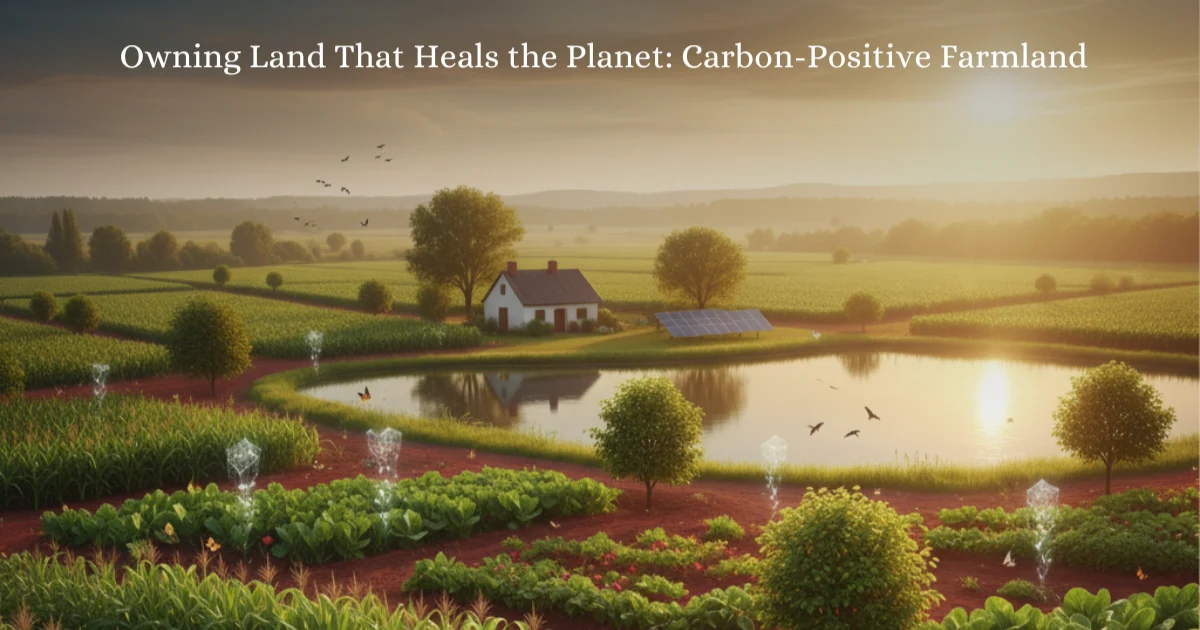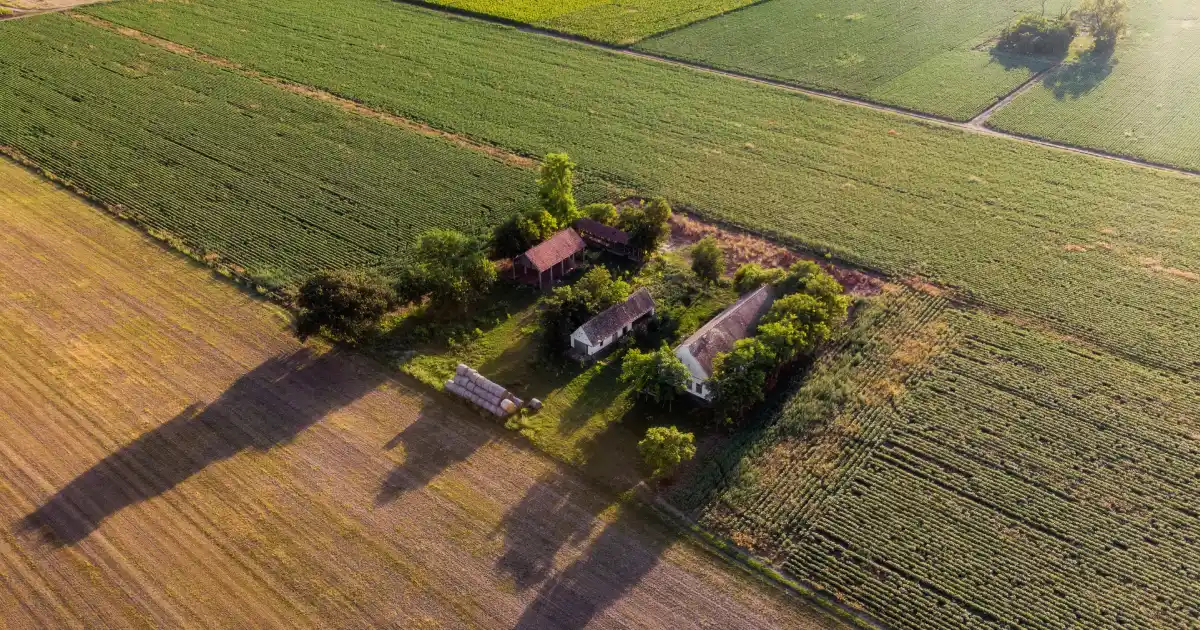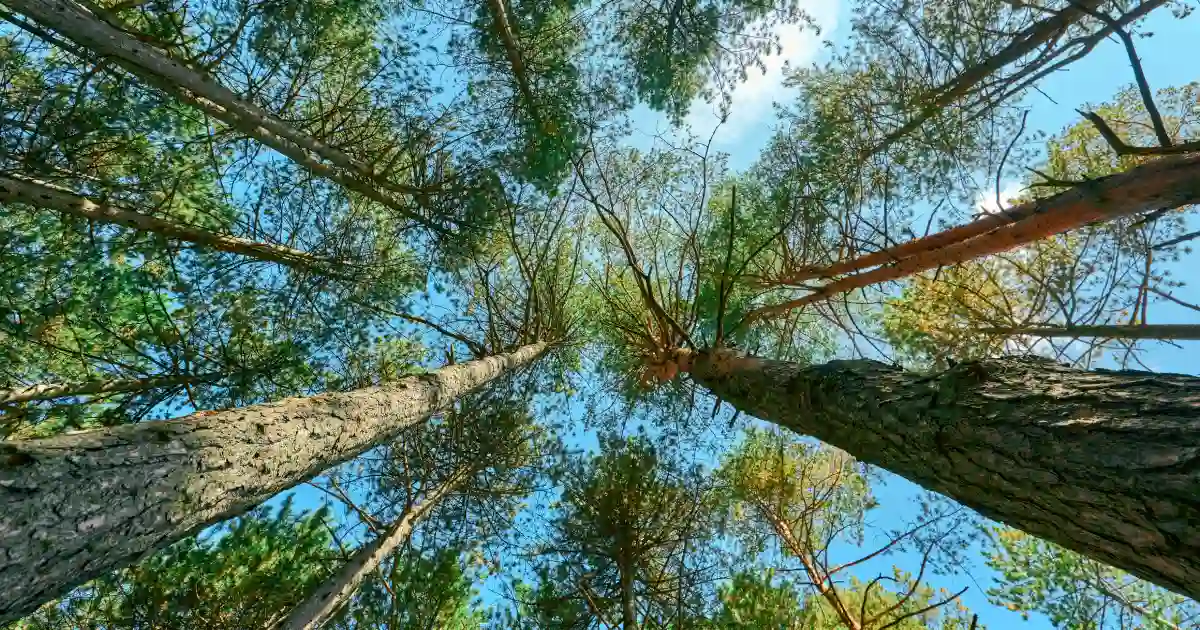It’s early morning at SVR Farms. The air is cool, mist hangs over young trees, and bees buzz around wildflowers. A small bird darts through the branches while earthworms quietly work below the soil. Everywhere you look, life is unfolding, not in chaos but in harmony. This is what biodiversity in agroforestry farms really looks like. It’s not just about growing trees; it’s about creating a living ecosystem where every plant, insect, and microbe has a role.
For eco-conscious investors, NRIs, and young professionals exploring managed farmland near Bangalore, this is what makes farmland ownership special. It’s a chance to invest in land that gives back land that restores soil, shelters wildlife, and grows stronger every season. What this really means is that SVR Farms offers more than tree leases; we enable landowners to invest in farmland that nurtures biodiversity while creating long-term value.
Why biodiversity in agroforestry farms matters
To most people, biodiversity suggests forests and wilderness. But biodiversity in agroforestry farms is about blending agriculture and nature. It means integrating trees, shrubs, crops, livestock, microorganisms, and wildlife, all arranged so they support each other.
Here’s what science tells us:
-
In India, agroforestry now covers about 28.42 million hectares, which is roughly 8.65% of the country’s area .
-
Agroforestry systems act as corridors and buffers that allow species movement and help conserve germplasm and sensitive species near forests .
-
Globally, agroforestry is recognized as one of the few farming methods that can merge food production with biodiversity conservation .
When you invest in farmland that prioritizes biodiversity, you’re not choosing between yield and nature. You’re aligning with a regenerative model that minimizes risk, improves resilience, and can even command higher premiums.
Enhancing soil biodiversity on farm: The hidden engine
Beneath your feet lies one of the richest ecosystems on Earth—soil. But in conventional farms, repeated tilling, chemical fertilizers, and pesticides destroy that ecosystem. If you’ve ever walked on dry, compacted land, you’ve seen the result.
Enhancing soil biodiversity on farm means reviving microbes, fungi, insects, earthworms, and the web of life that connects them. This matters because:
-
Microbes decompose organic matter and recycle nutrients, turning waste into fertility .
-
Fungi, especially mycorrhizal fungi, connect plant roots, improving water, phosphorus, and nitrogen uptake.
-
A living soil resists pests and diseases naturally, reducing the need for chemicals.
-
Diverse soil life improves structure, allowing better water absorption and reducing erosion—crucial during heavy monsoons.
In India, about 37% of land is estimated to be degraded, and soil erosion remains a serious issue . Rebuilding soil biodiversity is one of the few proven ways to reverse that trend while improving productivity.
Pollinator habitats, wildlife niches, and ecological design
Trees don’t just grow—they flower, fruit, and host life. At SVR Farms, we design each landscape to support pollinators, wildlife, and soil organisms in harmony.
-
Flowering strips, hedgerows, and native understory vegetation sustain bees, butterflies, birds, bats, and beneficial insects.
-
Deadwood, leaf litter, and log pools are left intentionally to feed decomposers, amphibians, and small mammals.
-
We use multi-species planting (fruit trees, nitrogen-fixing legumes, timber trees) to mimic natural forests and balance pest cycles.
-
Water bodies, ponds, and micro-wetlands help amphibians, dragonflies, and aquatic insects while cooling the microclimate.
Across agroforestry systems studied in India, researchers have recorded hundreds of plant species—some native, some regenerated naturally . These become living habitats rather than isolated patches.
In Andhra Pradesh, zero-budget natural farming led to a remarkable rise in biodiversity: fruit-eating birds increased by 160%, and insect-eating birds by 49% . These changes prove how farmland can transform into thriving ecosystems.
Long-term benefits of farm biodiversity for investors
You might wonder if this ecological richness also brings financial returns. The answer is yes, and here’s why.
-
Yield stability and risk mitigation
Biodiverse farms are more resilient to pests, disease, and climate shocks. When one crop suffers, another thrives. -
Premium produce and branding
Crops grown under biodiversity-friendly, regenerative systems attract higher market value in organic and niche markets. -
Carbon credits and ecosystem services
Agroforestry can sequester significant carbon. ICAR-CAFRI research shows agroforestry systems in India sequester around 0.35 Mg C/ha/year . -
Long-term capital appreciation
Farmland that regenerates ecosystems tends to appreciate faster as climate-resilient assets gain demand. -
Positive ESG and legacy value
For NRIs and urban investors, such land becomes a long-term ecological legacy, an asset that combines profit with pride.
When you invest in biodiversity, you’re protecting not just your returns but the ecosystem that supports them.
How we operate: A real model
At SVR Farms we don’t just sell land; we create living landscapes. We partner with informed landowners who want farmland that functions as an ecosystem.
We manage:
-
Planting design with the right mix of species and spacing
-
Soil regeneration through composting, microbial inoculants, and minimal tillage
-
Pollinator corridors, wet zones, and native vegetation for habitat diversity
-
Monitoring through soil biota and biodiversity indices
-
Access to organic markets and carbon credit opportunities
Our goal is to turn every landowner into a steward of regenerative farmland. Over time, you own managed farmland near Bangalore that doesn’t degrade but actively regenerates ecosystems and builds long-term value.
Challenges and how we overcome them
Restoring biodiversity in a farming landscape takes time and patience.
-
Upfront costs and delayed returns: Natural systems take years to stabilize, so we design phased investments.
-
Knowledge gaps: We bridge them with expert guidance and local partnerships.
-
Policy limitations: We align with government biodiversity schemes and NABARD programs to access incentives.
-
Market reach: We connect farms to conscious consumers and emerging carbon markets.
Each of these steps ensures the land stays productive, profitable, and ecologically sound.
What this means for you
If you’re exploring farmland investment Hosur or nearby Bangalore, don’t just look for tree plantations. Ask the right questions:
-
How are they enhancing soil biodiversity on farm?
-
Do they create pollinator habitats and wildlife corridors?
-
Do they measure and improve ecological health, not just yield?
-
Will your asset grow in both capital value and ecosystem strength?
Choosing biodiversity-rich farmland isn’t just a moral decision, it’s a smart, future-focused investment.
Conclusion
Trees are only the visible part of a deeper story. What truly matters is the living network that binds them, the soil organisms, pollinators, and natural cycles that sustain the entire system. Biodiversity in agroforestry farms, when nurtured consciously, becomes a lifeline for the planet and a source of lasting value for investors.
Owning farmland should feel like owning a piece of living legacy. Are you ready to plant more than trees and grow your own connection to nature and heritage?
Follow SVR Farms for real stories, project updates, and insights into building your legacy through smart farmland investment. [Click Here]

